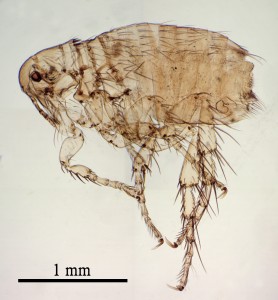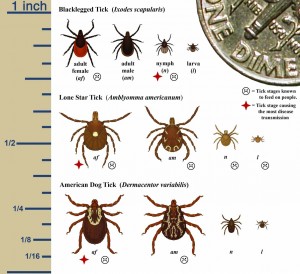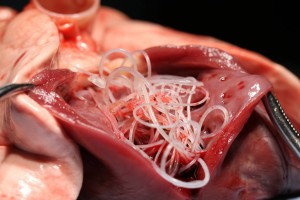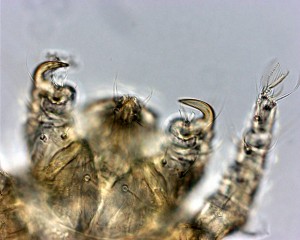It’s nearly impossible to have a fully indoor pooch, and who would wish that on their dog anyways? It is part of their nature to need to go outdoors and enjoy everything that nature has to offer. Unfortunately, along with the good things that nature can offer like sunshine and a nice breeze, nature also has some… unsightly or unfortunate things she can offer…

Things like parasites. They are dreaded by absolutely any and every dog owner who only wants what is best for their dog. Because they are such a troublesome and common issue that all dog owners have concern with, it is good to stay alert for any signs of these pests and immediately seek medical assistance in eradicating the parasite before it can permanently harm your dog’s health.
1. Lice

The Facts: Humans aren’t the only ones who can get lice, dogs are also unfortunately at risk. Unfortunately for dogs, they are always in danger of coming into contact with another infected dog and contracting this terrible infestation.
The Signs: Excessive itchiness and scratching. A dry, and coarse looking coat. Hair loss, most often around the ears, neck, shoulders, groin, and rectal area. Anemia, particularly in puppies and small dogs, or with some severe infestations.
2. Fleas

The Facts: Fleas are the most common pest that can harm your furry pet, and dogs do unfortunately come in contact and become infested by them easily.
The Signs: Droppings or “flea dirt” in a dog’s coat,
flea eggs on dog or in dog’s environment. Allergic dermatitis, caused by excessive scratching, licking or biting at skin. Hair loss. Scabs and hot spots on your dog’s skin. Pale gums.
3. Ticks

The Facts: Ticks are just about everywhere, and will seek out and bite nearly any mammal they can get their hands on. The unfortunate fact is that dogs have to go outside at some point and expose themselves to these parasites.
The Signs: Severe itchiness with red and inflamed skin at the area of the bite. Some dogs are allergic to ticks may react with even more severe symptoms. There is a potential for mild to high fevers, loss of appetite, pain, lethargy, and depression as a reaction to tick bites. These symptoms may last as short as 24 hours or continue for days to weeks because ticks can also carry diseases and may transmit one to your dog.
4. Worms

The Facts: Heart worms, Roundworms, Hookworms, Whipworms, Tapeworms are all parasites that love to target dogs. Many dogs contain one or more of these parasites if they don’t receive the kind of preventative medicine that they need to stay safe.
The Signs: Because heart worms attack a different part of the body their symptoms are a little bit different from the worms which mostly attack the digestive tract. They cause soft dry cough, inactivity or lethargy, weight loss or anorexia, rapid or difficult breathing. Nosebleeds, secondary pneumonia, increased blood pressure, excessive sleeping, seizures, blindness, and even lameness. The other worms cause issues such as: itchiness around the anus, licking of the anal and perianal area, butt scooting, weight loss without loss of appetite, increased appetite without weight gain, poor coat or skin condition, distended or painful abdomen, diarrhea, lethargy, and irritability.
5. Mites

The Facts: Mites frequently prefer to attack the insides of dog’s ears which is the most common area you will find them on your dog, but severe infestations may lead to more serious conditions such as Mange.
The Signs: Intense scratching, skin rash, crust formation in the affected area, and patches of hair loss.
If you notice any of these warning signs manifesting in your companion, you should immediately schedule an appointment with your veterinarian to assess your dog’s state of health. Many symptoms overlap and sometimes directly cause your pet to become vulnerable to other pests. No warning signs should be ignored, and treatment should not be delayed under any circumstances.
